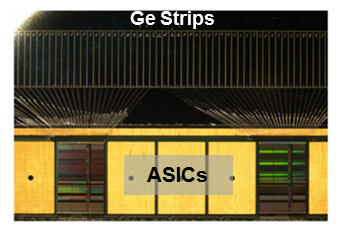|
To complement the Detector Pool, the group pursues R&D activities aimed at enabling unique detector capabilities not commercially available. We have chosen to focus our efforts on two areas for detector R&D: superconducting energy-dispersive detectors and semiconducting pixelated detectors. Each development is linked to scientific strategic goals of the APS, as well as leveraging local resources (i.e., ANL's CNM cleanroom and ASIC development at Fermilab).This serves to provide a well-balanced R&D portfolio for the group. |
| Pixel Array Detectors |
|
FastCCD is a collaboration between APS and LBNL to develop the FastCCD series of highly parallel readout direct-detection CCD cameras. The Fast CCD2 operates in a frame store mode with a 1Mpixel imaging area (30 micron pixels) currently running at 100 fps (sustained rates), but will eventually run at 200 fps in 1 MPixel mode. Faster rates are available over smaller ROI (e.g., 960 x 92 pixels @ 1000 fps and plans for 5000 fps for 960 x 12 pixels.
VIPIC (Vertically Integrated Photon Imaging Chip) is an effort to develop a pixel detector specifically optimized for ultra-fast x-ray photon correlation spectroscopy (XPCS) in collaboration with BNL and FNAL.
|
| Superconducting Detectors |
|
We are developing energy-dispersive x-ray detectors using superconducting circuits. Specifically, we are working on microwave kinetic inductance detectors and transition edge sensor microcalorimeters. |
|
|
| Germanium Strip Detector |
|
In collaboration with Brookhaven National Laboratory, we are developing Germanium strip detectors for energy-dispersed and powder diffraction. The Detector Group has analog and digital electronics expertise which can be utilized for specialized beamline applications as appropriate. |
| Microfabrication Support for XSD |
|
|





